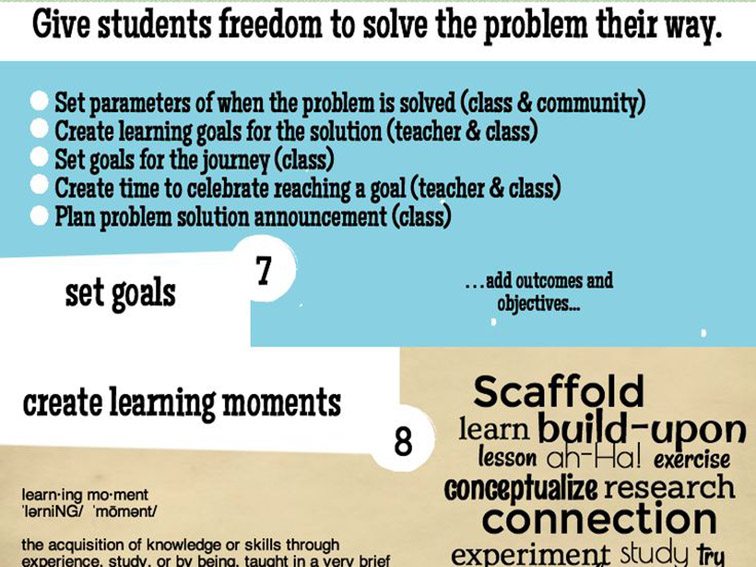What Is Problem-Based Learning?
by TeachThought Staff
What is problem-based learning? One definition, if we want to start simple, is learning that is based around a problem. That is, the development, analysis, and thinking towards a problem drives student learning forward.
We’ve been meaning to write a kind of beginner’s guide/primer to problem-based learning for, oh, about 18 months now and haven’t yet, so Mia MacMeekin’s graphic here is going to have to do. And luckily enough, it’s a nicely done visual that provides a useful starting point to make sense of this learning and teaching strategy.
The graphic eschews Mia’s usual squared, grid approach for something a bit more linear and comprehensive–an 8-step sequence to designing problem-based learning in your classroom. It offers a slightly more specific approach than our model for inquiry-based learning we created last year.
8 Steps To Design PBL In The Classroom
1. Start with a real-life problem
2. Map it out
3. Prototype, prototype, prototype
4. Be creative
5. Think global
6. Join a challenge
7. Set goals
8. Create learning moments
You can read more about learning models and theories in our 21st Century Dictionary for Teachers.
8 Steps To Design PBL In The Classroom


